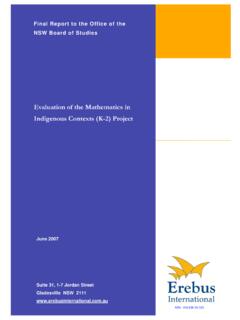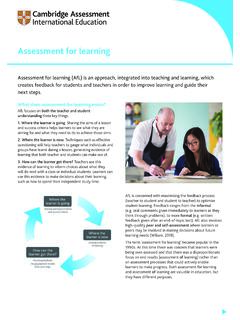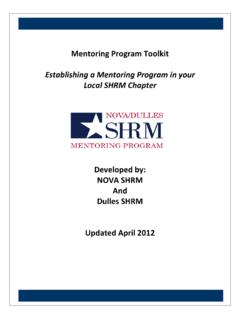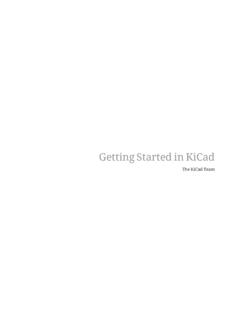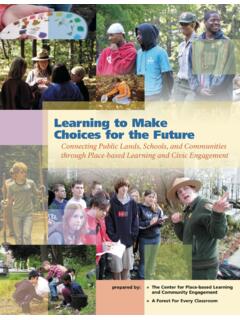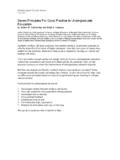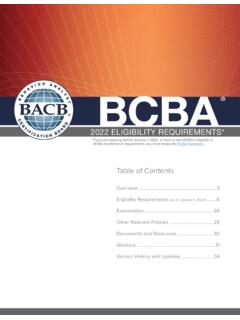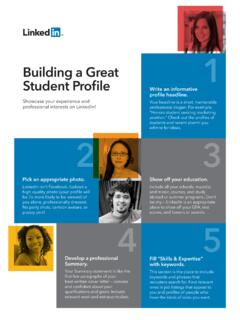Transcription of Working with Aboriginal Communities - ab …
1 Working with Aboriginal Communities Revised edition 2008. A Guide to Community Consultation and Protocols Gilgirri Rruki, Lin Onus, 1991 92. Licensed by VISCOPY 2001. Working with Aboriginal Communities Revised edition 2008. A Guide to Community Consultation and Protocols 2008 Copyright Board of Studies NSW for and on behalf of the Crown in right of the State of New South Wales. This document contains Material prepared by the Board of Studies NSW for and on behalf of the State of New South Wales. The Material is protected by Crown copyright. All rights reserved. No part of the Material may be reproduced in Australia or in any other country by any process, electronic or otherwise, in any material form or transmitted to any other person or stored electronically in any form without the prior written permission of the Board of Studies NSW, except as permitted by the Copyright Act 1968.
2 School students in NSW and teachers in schools in NSW. may copy reasonable portions of the material for the purposes of bona fide research or study. When you access the Material you agree: to use the Material for information purposes only to reproduce a single copy for personal bona fide study use only and not to reproduce any major extract or the entire Material without the prior permission of the Board of Studies NSW. to acknowledge that the Material is provided by the Board of Studies NSW. not to make any charge for providing the Material or any part of the Material to another person or in any way make commercial use of the material without the prior written consent of the Board of Studies NSW and payment of the appropriate copyright fee to include this copyright notice in any copy made not to modify the Material or any part of the Material without the express prior written permission of the Board of Studies NSW.
3 The Material may contain third-party copyright materials such as photos, diagrams, quotations, cartoons and artworks. These materials are protected by Australian and international copyright laws and may not be reproduced or transmitted in any format without the copyright owner's specific permission. Unauthorised reproduction, transmission or commercial use of such copyright materials may result in prosecution. The Board of Studies has made all reasonable attempts to locate owners of third-party copyright material and invites anyone from whom permission has not been sought to contact the Copyright Officer, ph (02) 9367 8289, fax (02) 9279 1482. First published in 2001 by Board of Studies NSW. GPO Box 5300. Sydney NSW 2001. Australia This revised edition 2008. Tel: (02) 9367 8111. Fax: (02) 9367 8484. Internet: ISBN 978 174147 8150.
4 2008451. Foreword Consultation with Aboriginal Communities is essential in the development of meaningful Aboriginal perspectives and studies across the curriculum. The involvement of Aboriginal people in the development and implementation of learning programs allows a genuine exploration of Aboriginal history, languages, culture and contemporary issues. Building a relationship between schools and their local Aboriginal community will enhance the learning experience of students, and promote Reconciliation through better understanding. This document was developed to support teachers in their implementation of the Aboriginal perspectives included across the curriculum, and was written in consultation with Communities , Aboriginal Education Workers, consultants and teachers. Many teachers have expressed a need for some clear guidelines to begin the process of consulting with local Aboriginal Communities to allow them to include Aboriginal people in their teaching.
5 Working with Aboriginal Communities provides advice on how to start this process and encourage a relationship with the local Aboriginal community. Observing appropriate protocols when Working with Aboriginal people and their Communities is critical to establishing positive and respectful relationships. Consulting with Aboriginal Communities should always be seen as a two-way process, with both parties learning together and from each other. Providing Aboriginal people with the opportunity to become involved in school programs gives authenticity to local Aboriginal perspectives. Students, schools and Communities all benefit from encouraging Aboriginal people to share their knowledge and life stories. Ms Cindi Berwick Dr John Bennett President General Manager NSW Aboriginal Education Office of the Consultative Group Inc.
6 Board of Studies NSW. Acknowledgements Project Manager: Angela Byron Thank you to members of the AECGs throughout NSW who guided and supported the development of this resource. The following people generously shared their experience and insight: Margaret Simoes, Kim Hill, Susan Matthews, Rayelene Saunders, Christine Foreshew. Thank you also to the support staff from the NSW Department of Education and Training and Diocese offices in NSW who provided valuable feedback during the production of this resource. We also extend our thanks to the students, staff and community at Glebe Public School, Sydney, and the Winanggaay Tutoring Program, for their willing cooperation and participation in this project. This project was supported by a grant from the Commonwealth Department of Education, Employment and Workplace Relations.
7 The views expressed by the authors do not necessarily reflect the views of this Department. Peta Hill, who took the photographs throughout this book, is gratefully acknowledged. A note on terminology It is important to note that the term Aboriginal ' is more appropriate than Aborigine', and should always be used when referring to Aboriginal people, their history and culture. It is also acknowledged that Indigenous peoples from the Torres Strait Islands should be consulted if they are part of the local community. Acronyms used in this book: ACLO Aboriginal Community Liaison Officer AEO Aboriginal Education Officer, previously known as Aboriginal Education Assistant (AEA). AECG NSW Aboriginal Education Consultative Group Inc. AEW Aboriginal Education Worker CEC Catholic Education Commission DET NSW Department of Education and Training DOCS Department of Community Services FATSIL Aboriginal and Torres Strait Islander Corporation of Languages HSIE Human Society and its Environment TAFE Technical and Further Education Table of Contents Part 1 Introduction Rationale 2.
8 Who is this book for? 3. What is consultation? 3. What are protocols? 4. Why consult Aboriginal Communities ? 4. Considering sensitive issues 5. A coordinated approach 5. Part 2 Consulting with Aboriginal Communities Identifying a process 8. Identifying the local Aboriginal community 8. The NSW Aboriginal Education Consultative Group Inc. 9. Systemic support networks 9. getting started with consultation 10. Considering protocols 10. Making contact 12. getting to know the community 13. Localising the curriculum 14. Links with Aboriginal organisations and government agencies 14. Teaching Aboriginal Languages 15. Further information Part 3 Working with Aboriginal People and Communities Local Aboriginal Communities and curriculum support 18. Working with Aboriginal people in your school 20. Planning 20. Venue 21. Transport 22.
9 Preparing the students 22. Other considerations 22. Sensitive issues in the curriculum 23. Teaching about the Stolen Generations 24. Preparing the speaker 24. Preparing the students 24. Undertaking research 25. Intellectual property and copyright 26. Ethical practices when recording people's knowledge or stories 26. Collecting oral histories 27. Glossary 29. Part 1. Introduction Working with Aboriginal Communities Rationale To enable teachers and schools to establish a learning partnership with Aboriginal Communities , it is vital to be aware of the protocols of community consultation. Aboriginal people are the owners and custodians of their knowledge and culture. They have the right to be consulted when aspects of Aboriginal history and culture are being incorporated into the school curriculum. Building learning partnerships is a mutually beneficial process that gives credibility and integrity to the teaching of Aboriginal students and syllabus content related to Aboriginal issues.
10 Working together on meaningful projects builds confidence and capacity in Aboriginal parents and other members of the local Aboriginal community. This book is designed to assist in building these relationships within the context of a teaching and learning environment, by giving teachers advice on making Aboriginal people feel welcome and valued in their local school. The inclusion of Aboriginal content across the curriculum has led many educators to recognise the value of including Aboriginal people in their planning and teaching. However, some have been unsure of the most appropriate way to approach Aboriginal community members. This book provides advice to schools, educators and students about the protocols for community consultation. In outlining appropriate steps it will help build learning partnerships between schools, teachers and Aboriginal Communities .


